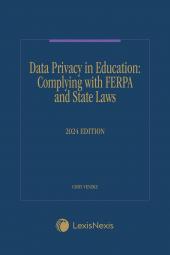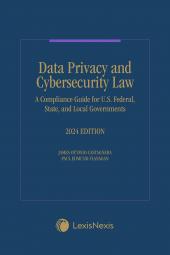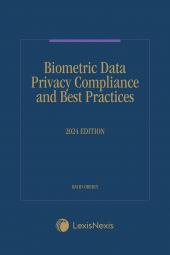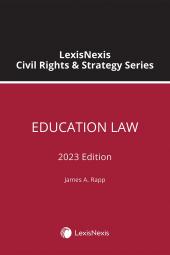Data Privacy in Education: Complying with FERPA and State Laws
Select a format
 International Order Inquiry
International Order Inquiry
Select subscription type
Terms & conditions
Subscribers receive the product(s) listed on the Order Form and any Updates made available during the annual subscription period. Shipping and handling fees are not included in the annual price.
Subscribers are advised of the number of Updates that were made to the particular publication the prior year. The number of Updates may vary due to developments in the law and other publishing issues, but subscribers may use this as a rough estimate of future shipments. Subscribers may call Customer Support at 800-833-9844 for additional information.
Subscribers may cancel this subscription by: calling Customer Support at 800-833-9844; emailing customer.support@lexisnexis.com; or returning the invoice marked "CANCEL".
If subscribers cancel within 30 days after the product is ordered or received and return the product at their expense, then they will receive a full credit of the price for the annual subscription.
If subscribers cancel between 31 and 60 days after the invoice date and return the product at their expense, then they will receive a 5/6th credit of the price for the annual subscription. No credit will be given for cancellations more than 60 days after the invoice date. To receive any credit, subscriber must return all product(s) shipped during the year at their expense within the applicable cancellation period listed above.
The total price includes the product(s) listed in the Order Form and any Updates for a limited period (minimum period of 30 days) after the order is placed ("Order Window"). Shipping and handling fees are not included in the grand total price.
All shipments may be returned, at subscribers' expense, for full credit of the Price within 30 days of receipt.
Shipments may not be returned, and no credits will be issued, more than 30 days after receipt.
After the Order Window, subscribers will receive notice of Updates along with the then-current grand total price and order process as Updates become available. Subscribers will only be shipped those Updates they specifically request.
Product description
View a sample of this title using the ReadNow feature
No one can deny the increasing importance of data in education over the last quarter century. Although the COVID-19 pandemic underscored the critical role of technology in education, education professionals have long used student data to assess students’ progress and needs, measure school effectiveness, connect students with key services and benefits, and ensure that the school environment is safe and healthy. The importance of student data to the many functions of schools and educational institutions means that it must be allowed to both flow among service providers for students and be protected.
This publication is designed for legal professionals working closely with schools and other educational institutions. Thus, it is organized around the many functions that schools must fulfil, including teaching and learning, nutrition, protecting children’s health and safety, connecting student with employment and educational opportunities, conducting educational research, and reporting to other governmental institutions. Functional areas include:
• Relationships with parents, including how schools may verify parents’ identities online and in person, what notices they must be given, and what rights parents have under state and federal law.
• Rights that students are entitled to exercise, how those rights evolve as students age, and how they interact with the rights of parents and the authority of educational institutions.
• Sharing student data within the school system and with state educational agencies, including statewide longitudinal data systems
• Navigating disclosures to other governmental entities when providing benefits under programs for child nutrition, migrant students, foster children, and broadband access.
• Reporting child abuse and student immunizations, including addressing conflicts between FERPA and state legal mandates.
• Protecting student privacy while also providing healthcare services to students, including interactions between FERPA and the Health Insurance Portability and Accountability Act (HIPAA).
• Law enforcement access to student records and how student privacy rules apply when addressing specific offenses like truancy, drug abuse, and sexual harassment — including interactions with Title IX and the Cleary Act.
• How to protect student privacy in an age of education technology.
• Additional privacy protections guaranteed by the U.S. Constitution and civil rights laws.
Within each functional area, this publication:
• Describes FERPA’s requirements, including how the U.S. Department of Education, courts, or other enforcement authorities have interpreted ambiguities in the statute
• Analyzes how FERPA interacts with other laws and program requirements, such as civil rights requirements, the Every Student Succeeds Act, HIPAA, the Children’s Online Privacy Protection Act, the National School Lunch Program, the E-Rate Program, and (of course) the U.S. Constitution.
• Highlights still unresolved questions around FERPA and other laws, and how institutions may best proceed considering those ambiguities.
• Dispels myths and misconceptions about student privacy.
This publication recognizes that neither FERPA alone nor federal laws generally are the sole, or even the primary, laws governing education. Thus, the publication includes an analysis of student privacy laws for all U.S. states, including the District of Columbia.
eBooks, CDs, downloadable content, and software purchases are noncancelable, nonrefundable and nonreturnable. Click here for more information about LexisNexis eBooks. The eBook versions of this title may feature links to Lexis+® for further legal research options. A valid subscription to Lexis+® is required to access this content.
Table of contents
Chapter 1 FERPA in Context: Privacy as a Civil Right
Chapter 2 Basic Functioning of FERPA: Parents, Schools, and Personal Information
Chapter 3 Exercising FERPA Rights and Their Exceptions
Chapter 4 Sharing Data Within the School System
Chapter 5 Partnering with Community Organizations to Support Students
Chapter 6 Sharing Data with Non-Education Governmental Entities
Chapter 7 School Accountability
Chapter 8 Healthcare, Emergencies, and Child Safety
Chapter 9 Law Enforcement and Schools
Chapter 10 Education Technology
Chapter 11 Enforcement
Chapter 12 FERPA and State Laws
 Lexis Nexis
Lexis Nexis 


